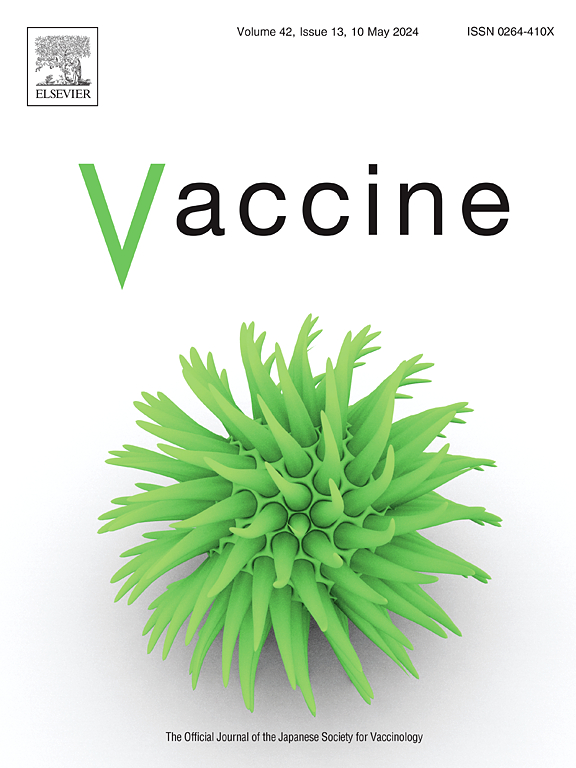Knowledge-based mitigation of the environmental risk of Orthoflavivirus live-attenuated vaccines by targeting viral encoded determinants for the mosquito attenuated phenotype
IF 4.5
3区 医学
Q2 IMMUNOLOGY
引用次数: 0
Abstract
Many mosquito-borne orthoflaviviruses are important public health problems. Vaccination is critical for disease control because there is no licensed antiviral therapy for any orthoflavivirus. Live-attenuated vaccines (LAVs) that elicit protective immunity with one single immunization are the most effective tool for disease control, as shown by the success of implementing yellow fever (YF) 17D and Japanese encephalitis (JE) SA14–14-2 vaccines in routine immunization programs within endemic regions. Importantly, neither the YFV 17D strain nor the JEV SA14–14-2 LAV strain are mosquito-competent, meaning that neither vaccine strain can effectively infect and disseminate in mosquito tissues following engorgement of viremic blood. The mosquito-attenuated phenotype also ensures the safety of the licensed LAVs IMOJEV, Dengvaxia and QDENGA. In the 21st century, regulators expect the attenuated phenotype of candidate orthoflavivirus LAVs to also include a demonstration of reduced replication and dissemination in arthropod vectors under laboratory conditions in order to support environmental risk assessments of the impacts of these LAVs in nature. Achieving a safe level of attenuation of orthoflaviviruses in mosquitoes requires multigenic mutations to prevent reversion to the wild-type phenotype. This review discusses knowledge of orthoflaviviral encoded determinants for infection and dissemination in mosquito tissues which have potential utility for the rational design of candidate LAVs. Several attenuating mutations discovered to date are located within genomic regions that are conserved among orthoflaviviruses and can potentially support the establishment of a broadly effective attenuating strategy.
通过靶向蚊子减毒表型的病毒编码决定因素,以知识为基础减轻正黄病毒减毒活疫苗的环境风险
许多蚊媒正黄病毒是重要的公共卫生问题。疫苗接种对疾病控制至关重要,因为目前尚无针对正黄病毒的许可抗病毒疗法。在流行地区的常规免疫规划中成功实施黄热病(YF) 17D和日本脑炎(JE) SA14-14-2疫苗表明,通过一次免疫即可产生保护性免疫的减毒活疫苗(lav)是疾病控制的最有效工具。重要的是,YFV 17D毒株和JEV SA14-14-2 LAV毒株都不具有蚊性,这意味着这两种疫苗毒株在病毒血充血后都不能在蚊子组织中有效感染和传播。蚊子减毒表型也确保了获得许可的las IMOJEV、Dengvaxia和qenga的安全性。在21世纪,监管机构期望候选正黄病毒lav的减毒表型还包括在实验室条件下节肢动物载体中减少复制和传播的证明,以支持这些lav在自然界中影响的环境风险评估。要使正黄病毒在蚊子体内的衰减达到安全水平,需要进行多基因突变,以防止病毒恢复到野生型表型。本文综述了正黄病毒编码的决定因子在蚊子组织中的感染和传播,这对合理设计候选lav具有潜在的实用价值。迄今发现的几个减毒突变位于原黄病毒保守的基因组区域内,可能支持建立广泛有效的减毒策略。
本文章由计算机程序翻译,如有差异,请以英文原文为准。
求助全文
约1分钟内获得全文
求助全文
来源期刊

Vaccine
医学-免疫学
CiteScore
8.70
自引率
5.50%
发文量
992
审稿时长
131 days
期刊介绍:
Vaccine is unique in publishing the highest quality science across all disciplines relevant to the field of vaccinology - all original article submissions across basic and clinical research, vaccine manufacturing, history, public policy, behavioral science and ethics, social sciences, safety, and many other related areas are welcomed. The submission categories as given in the Guide for Authors indicate where we receive the most papers. Papers outside these major areas are also welcome and authors are encouraged to contact us with specific questions.
 求助内容:
求助内容: 应助结果提醒方式:
应助结果提醒方式:


